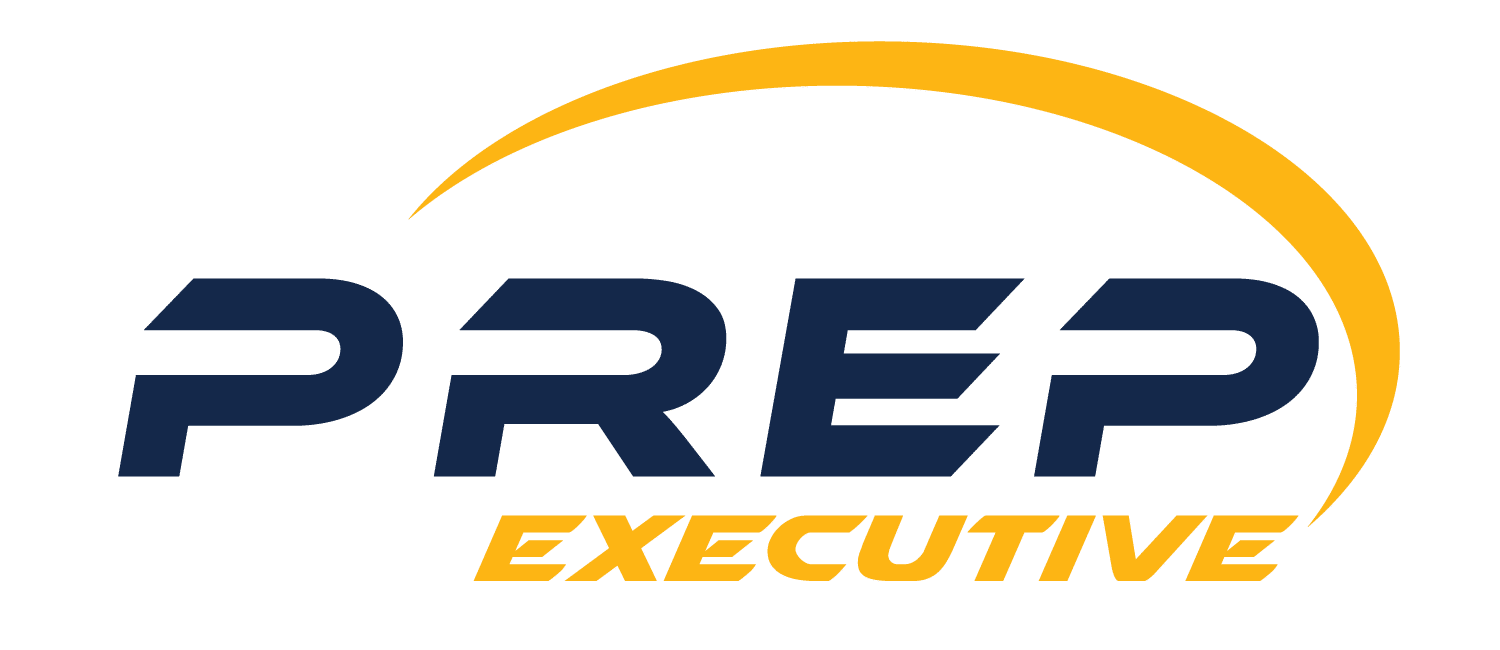In this post, we’re going to breakdown exactly how to prepare for the GMAC Executive Assessment (EA). There’s lots of dig through, so feel free to jump to any section you need:
Table of Contents
What is the GMAC Executive Assessment?
Not Everyone Accepts the EA, But They Might
Why the Executive Assessment is the Least of Your Concerns
What’s on the EA?
What’s a Good Score on the EA?
You Do Need to Prepare for the EA
How to Prepare for the GMAC Executive Assessment
Final Thoughts on How to Prepare for the GMAC Executive Assessment
What is the GMAC Executive Assessment?
The Executive Assessment is an exam launched in 2016 by the Graduate Management Admissions Council (GMAC), the makers of the GMAT. The EA was developed as an admissions test specifically for Executive MBA programs.
Prior to 2016, if you wanted to apply for an EMBA program, you had to take the GMAT (the standard admissions test for traditional MBA programs). Only, preparing for the GMAT is months of work. It’s also normally taken by MBA applicants who have been out of school for only a few years, not more than a decade, as EMBA applicants typically have.
Most importantly, EMBA programs care more about the quality of your work experience and success as a leader than your ability to do geometry.
The result?
Many EMBA programs began to waive the GMAT as a requirement or develop their own admissions tests. The clear need for a revised admissions test for EMBA programs led the GMAC to develop the Executive Assessment.
If you are given the option to take the GMAT or the EA, take the EA. It is shorter, more focused, and simpler to prepare for than the GMAT (more on this later).
Not Everyone Accepts the EA, But They Might
As of January 2020, more than 90 business schools–including some of the best in the world–accept the EA as an admissions test.
Check here to ensure that your program is on the latest list:
https://www.gmac.com/executive-assessment/about-ea/ea-accepting-schools
But what if your program isn’t on the list?
Ask the admissions officer if they will accept the EA. Depending on your experience and compatibility with the EMBA program, the admissions committee may decide to accept your score or waive the admissions test requirement altogether.
If the program says no, you are still free to apply to other programs or jump through the hoop of taking the GMAT.
Why the Executive Assessment is the Least of Your Problems–But Still Important

Image: Unsplash
Hopefully, you did the legwork of establishing the relationship with admissions before submitting the application. Here’s a reminder of the process we recommend:
Actually taking the EA is the last step in the process. Depending on your program deadlines and when you decide to apply, you will probably start your preparation between 40 and 60 days before you take the official test.
Be sure to keep the admissions officers notified of when you plan to take the exam. If the program is REALLY interested in you, the admissions staff may tell you:
- How far in advance you need to submit your score (most accept it on the deadline)
- What score you need (it’s usually a 150)
- If they accept the unofficial score you receive on test day (most do)
Most importantly, letting admissions officers know your progress demonstrates how hard you are studying and how much you want to get into the program.
In the past, we have worked with students who were able to get into their chosen EMBA programs with a less-than-optimal score because they gave a good faith effort and admissions knew about it.
In truth, your EA score is a reason to keep you out, not to get you in. Savvy EMBA admissions officers can spot a good candidate and will not let the EA stand in their way of getting you (an asset) into the program.
What’s on the EA?
There are 3 sections on the exam, each with different types of questions:
Verbal Reasoning Section (“the reading”): 14 questions, 30 minutes
- Critical reasoning
- Reading comprehension
- Sentence correction
Quantitative Reasoning Section (“the math”): 14 questions, 30 minutes
- Problem-solving
- Data sufficiency
Integrated Reasoning Section (a bit of both): 12 questions, 30 minutes
- Multi-source reasoning
- Graphics interpretation
- Two-part analysis
- Table analysis
Each section is 30 minutes long, making the entire EA a 1.5 hour test.
You can only use a calculator on the Integrated Reasoning Section. You are allowed to take a break, but your time will keep running.
Since there is so much to cover on the contents of the EA, check out our blog for more detailed insight into the test and each section.
What’s a Good Score on the EA?
You receive raw scores for each of the 3 sections from 0 to 20. These scores are then combined to produce a total score from 0 to 200.
A good score on the EA is generally considered to be 150…
But, since the EA is still a relatively new test, many EMBA programs haven’t decided on their exact requirements.
The 150 is more like a passing score, than an indication of your business school aptitude (like the GMAT).
Keep in mind, your professional background and “fit” with the program is much more important than your EMBA score. You can be admitted with less than a 150, but it is unlikely that a high EA score will make up for deficiencies in your profile.
So, what good are the raw scores?
Generally, EMBA programs use the quantitative section raw score as an indicator of whether you will struggle with the quant aspects of your EMBA courses. If your quant score is too low, admissions officers may ask you to take an additional quant course. If your verbal score is low and you are not a native English speaker, you may be asked to take the IELTS or a writing workshop after you are accepted.
At Prep Executive, we like to see that your raw scores are balanced to indicate that you are well rounded. We alternate your preparation between the quant and verbal so that your scores increase together, giving you the best chance of ending with balanced raw scores.
You Do Need to Prepare for the EA

Image: Unsplash
You have probably heard the tall tales or read online about the people who just walked into the exam and scored a 150 with no preparation.
Or…
You’ve heard about the ones who picked up an old GMAT book and studied for 3 months at least 20 hours a week and then scored a hard-earned 150.
The truth about EA preparation?
Most people–and by most we mean nearly everyone–fall somewhere in the middle.
You do need to prepare for the EA.
It has been a long time since any of us added fractions or looked for misplaced modifiers.
However…
Preparing for the GMAT but taking the EA is like training for a marathon to run a 5k. The GMAT includes math content areas and a level of difficulty that are not on the EA, so preparing for 3 months is overkill. You have a demanding job and may have a family or other people to support. You cannot waste time over-preparing for a test you aren’t going to take.
You also cannot waste time cobbling your own program together from old GMAT books in an effort to avoid spending $1,000 (cost-benefit analysis, anyone?).
Besides, if you have correctly worked through the EMBA Strategy we presented earlier, you won’t feel pressured to be a “high scorer.”
So, how should you prepare for the EA?
Don’t worry…that’s our specialty.
How to Prepare for the GMAC Executive Assessment
The process we outline here is the exact one we tell Prep Executive students to follow.
Sign up for the Prep Executive course or select another.
You can try to study on your own using old GMAT books but if you want a clear advantage, take a course that has been prepared by experts.
When we designed the Prep Executive course, we wanted to make sure it was as simple to follow as possible. Just open your laptop and press play. All the video lessons, homework, and practice tests are online so you can start immediately and work when you want.
Get the GMAC Official EA Prep Bundle Plus (already included for Prep Executive students).
The GMAC question bank and official EA practice tests will give you experience with real EA questions. No matter how you plan to study, you need these questions. They are simply the best practice questions you will find anywhere.
Prep Executive students get this bundle included with their course fees. We purchase a voucher on your behalf (at no extra charge) and send it to you with instructions for use.
Schedule your study sessions.
You’re a busy executive/manager/leader, so you probably have a full schedule. If something is not on your calendar, it’s not likely to get done.
So…
You need to schedule 1.5 to 2 hour study sessions to prepare for the EA.
Why not longer?
The real EA is only 90 minutes long so it’s better to train your body to sit and consistently perform for that period of time.
If you want to take the EA in 40 days (this is the fastest study plan we recommend), you need to study 5 days a week. Use the other 2 days as rest days (they do not have to be consecutive).
One of the great aspects of Prep Executive on-demand video lessons is that you can study whenever you want.
Only have time to hit the books when the baby is sleeping? No problem.
Are you the best in the mornings before the rest of your staff shows up? Great.
Anytime, anywhere, and the online platform automatically saves your progress.
Work through the lesson.
For one of your study sessions, you will be working through the lesson. For Prep Executive students that means:
- Watch the videos
- Add your own notes to the strategy notes provided (downloadable, printable PDF)
- Work the problems within the lesson as your instructor works them
- Answer the interactive questions within the lesson
- Complete the timed drill at the end of the lesson
A timed drill is 7 questions relevant to what you just learned that must be completed in 15 minutes. The drill is the exact length of 1 EA module (half of the test section) and forces you to make quick decisions in a timed environment.
Most importantly, the drill checks whether you understood the concepts presented in the lesson.
If you are studying on your own without a program, be sure to set aside some drill questions for yourself, at the end of each lesson.
Don’t just watch the lessons…
Participate in the lesson so that you actually retain the material and can do well come test time.
Do the homework in your next study session.
There is an art to doing EA homework correctly. In fact, it’s better to call it deliberate practice. Here’s what to do:
- Work through the practice set completely without referring to your notes or the lesson.
- Check with the short answers (this is done automatically for Prep Executive students).
- Review the incorrect questions using your notes and the lesson.
- Rework questions you are still unsure about using the explanations as a guide.
- Submit questions that you are still unsure about via email or to your dedicated EA coach during your coaching session.
For Prep Executive students, video explanations are provided for all the homework questions in our platform. Use the beginning of the video as a starting point, pause it, and try to continue on your own BEFORE you watch the entire explanation.
So why not do the homework immediately after the lesson?
First, you need to give your brain time to absorb and assimilate the new information before you try to apply it. Second, each study session should only be about 1.5 to 2 hours. If you do the homework in the same session, it will take about 4 hours total. Last, your brain needs time for all the concepts and practice to “stew” before you move onto the next set of concepts.
Take one practice test at the halfway mark and one practice test just before the official test.
You only have 2 real practice tests, so you have to use them wisely. Take one test once you’re halfway through your so you know if you need to increase your study intensity or if you need more help.
Your score for this test does not have to be a 150, but it should be trending in that direction. A 125+ would be fine. If your score is lower than that, then seek help.
Take the second practice test towards the end of your study. It should be around a 150, so that you know you can perform to that level on test day.
All practice tests should be taken modeling actual test conditions:
- Take the test in one 90 minute sitting.
- Don’t stop or take breaks during the test.
- Only use a calculator on the Integrated Reasoning section, not the Quantitative.
- Don’t check your answers between each section.
- Use a yellow legal notepad with a felt-tipped pin to mimic the laminated “scratchpad” you will be given on test day.
Final Thoughts on How to Prepare for the GMAC Executive Assessment
If you have used the study procedure we just outlined, you should be around a 150. If you are not, hop on our chat so we can diagnose you.
Ready to start preparing for the EA?
Get started right now with Prep Executive’s interactive course, expert live coaching, and more. It’s 100% risk-free with the 7 Day Money Back Guarantee.
You May Also Like…
Info

20 Questions About the Executive Assessment Exam Answered
Admissions exams change over time and the Executive Assessment (EA) exam is no different. In fact, since being...
Admissions

Executive MBA Application Requirements
If you're applying for your Executive MBA, then you know that there are lots of application requirements. In addition...
Programs

Which Schools Accept Executive Assessment?
As of June 2020, more than 90 business schools accept the Executive Assessment as an admissions test. Each business...







